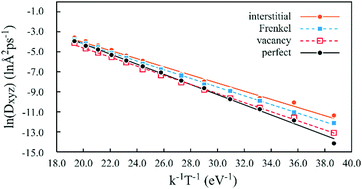Molecular dynamics studies of irradiation effects on hydrogen isotope diffusion through nickel crystals and grain boundaries
Abstract
Experiments indicated that tritium permeation in 316 austenitic stainless steel is enhanced by a factor of ∼2–5 after irradiation as compared to the ex-reactor results. To understand this enhancement, we have performed extensive molecular dynamics simulations to study the effects of both the grain boundary structure (Σ3{111}, Σ5{100} and Σ11{311}) and the nature of point defects (vacancy, interstitial, and Frenkel pair) on hydrogen diffusivities in an exemplar fcc metal (nickel). By deriving diffusivities from mean square displacement, all possible atomic jump paths encountered during real diffusion are realistically sampled. By performing extremely long simulations, the statistical errors typically associated with this method are also significantly reduced. We found that within grains, interstitial defects increase diffusivity whereas vacancies have almost no effects. This mechanism might explain hydrogen permeation enhancements in irradiated materials with coarse grains. The largest increase in hydrogen diffusivity was found at a certain combination of grain boundary and point defect. This suggests that permeability of materials with finer grains can also be enhanced by irradiation depending on whether the grain boundary character is skewed. Our results shed new light on the enhancement of tritium permeation in 316 stainless steels during reactor operations.



 Please wait while we load your content...
Please wait while we load your content...